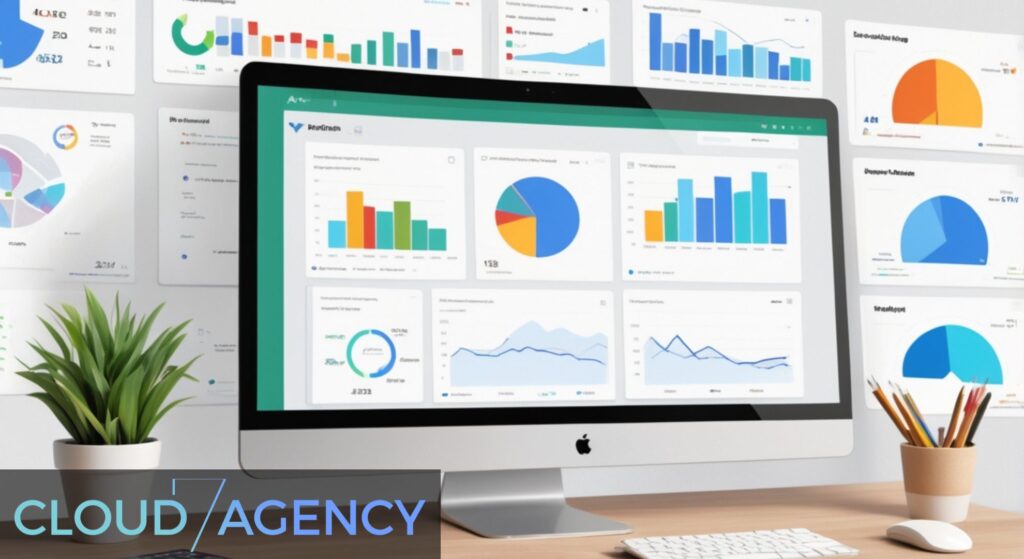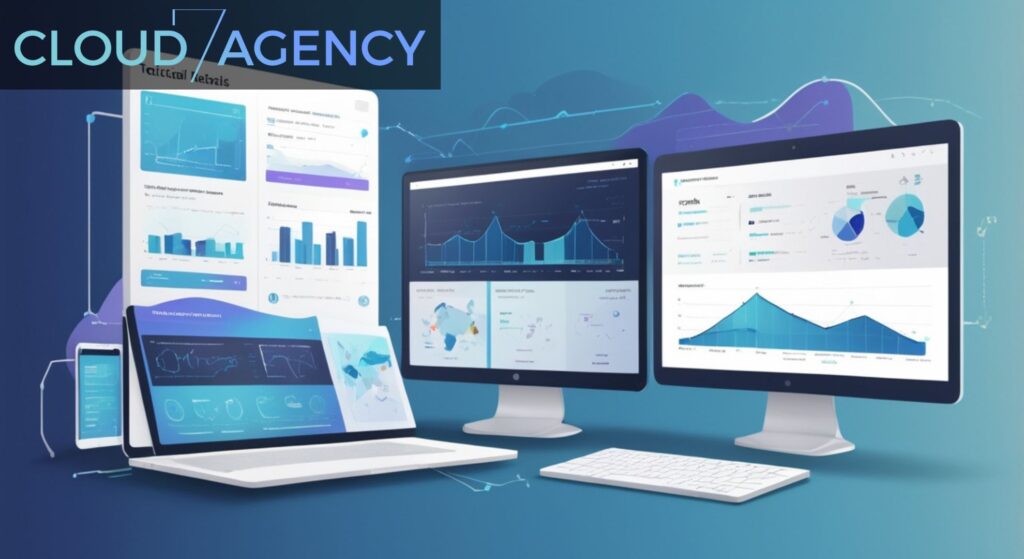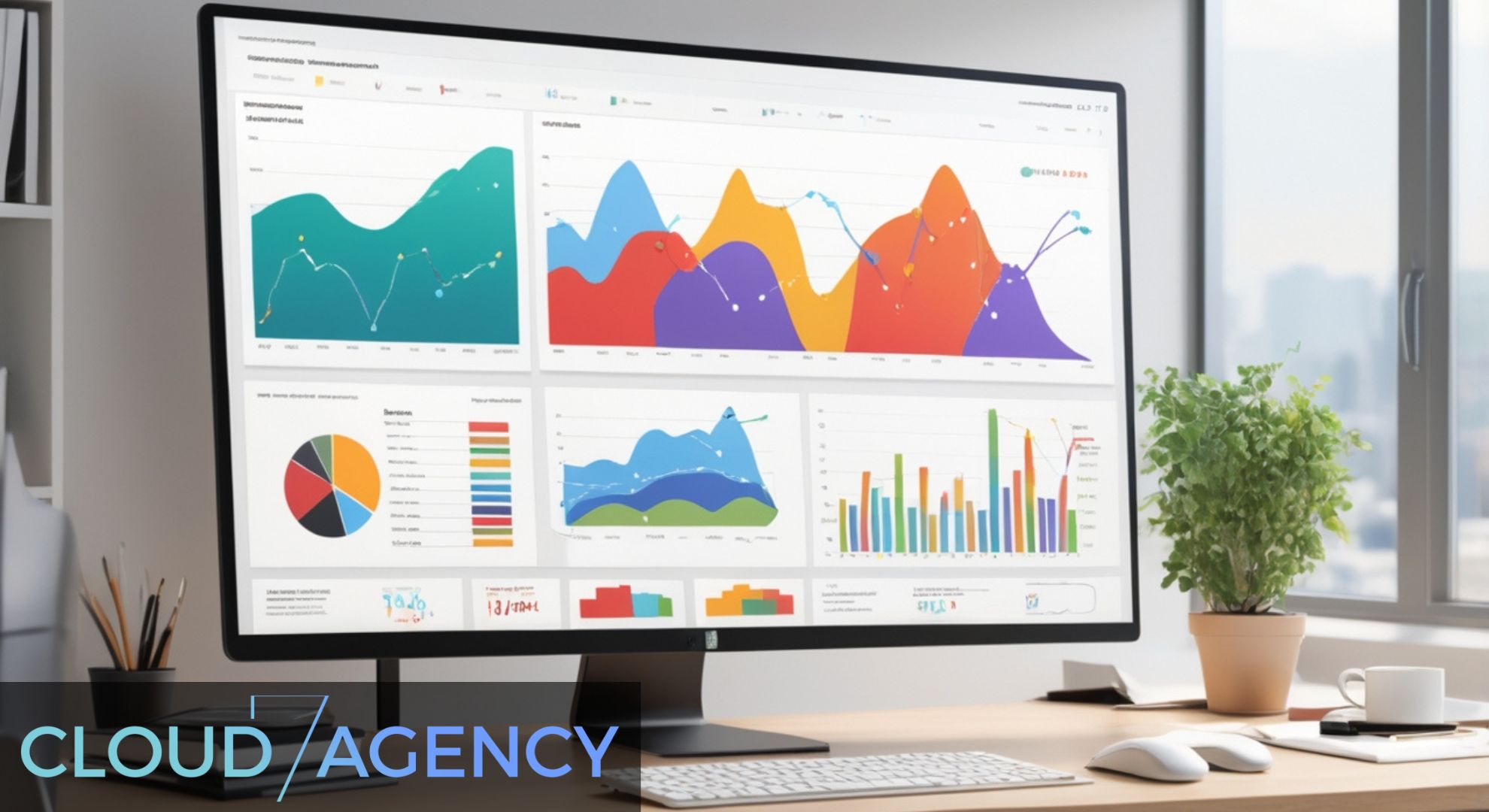In the rapidly evolving landscape of digital marketing, local businesses face an increasingly complex challenge: understanding which performance metrics truly drive success. While the allure of vanity metrics can be tempting, savvy business owners and marketers are discovering that not all data points are created equal. The difference between tracking the right metrics and simply collecting data can mean the difference between sustained growth and stagnant results.
Local SEO analytics presents a unique set of challenges that differ significantly from traditional SEO approaches. Unlike national or global campaigns, local search optimization requires a nuanced understanding of geographic relevance, community engagement patterns, and hyperlocal consumer behavior. The metrics that matter most for a local business aren’t necessarily the same ones that drive success for enterprise-level organizations or e-commerce platforms.
The modern local business landscape is saturated with data sources, from Google Analytics and Google My Business insights to social media analytics and customer relationship management systems. This abundance of information can be overwhelming, leading many business owners to either ignore analytics entirely or focus on metrics that provide little actionable insight. The key lies in identifying which SEO performance metrics actually correlate with business outcomes and customer acquisition.
Understanding the distinction between leading and lagging indicators becomes crucial when developing a comprehensive local SEO strategy. Leading indicators help predict future performance and allow for proactive adjustments, while lagging indicators confirm what has already happened. The most successful local businesses learn to balance both types of metrics while maintaining focus on those that directly impact their bottom line.
The challenge extends beyond simply identifying relevant metrics to understanding how they interconnect and influence each other. Local search rankings, for instance, don’t exist in isolation but are influenced by factors ranging from online reviews and citation consistency to website performance and user engagement signals. This interconnected nature of local SEO requires a holistic approach to analytics that considers the entire customer journey.
Key Takeaways
Focus on Revenue-Driving Metrics: Prioritize performance metrics that directly correlate with business outcomes, such as qualified leads, conversion rates, and customer lifetime value, rather than vanity metrics like total website traffic or social media followers.
Local Search Visibility Indicators: Monitor local pack rankings, Google My Business insights, and “near me” search performance as these directly impact local customer discovery and foot traffic generation.
Customer Journey Analytics: Track the complete customer journey from initial search to conversion, including metrics like click-through rates from local listings, time spent on location pages, and phone call conversions from search results.
Review and Reputation Metrics: Measure review velocity, average rating trends, and review response rates as these significantly influence local search rankings and customer trust decisions.
Technical Performance Indicators: Monitor website speed, mobile usability, and Core Web Vitals as these technical SEO performance metrics increasingly impact local search rankings and user experience.
Citation and NAP Consistency: Track citation accuracy, NAP (Name, Address, Phone) consistency across platforms, and local directory presence as foundational elements of local SEO success.
Competitive Benchmarking: Establish baseline metrics against local competitors to understand market position and identify opportunities for improvement in local search performance.
Seasonal and Trend Analysis: Analyze performance metrics over time to identify seasonal patterns, local market trends, and the long-term impact of SEO initiatives on business growth.
Understanding Local SEO Analytics Fundamentals
Local SEO analytics differs fundamentally from traditional SEO measurement approaches because it operates within a geographically constrained environment where relevance, proximity, and prominence take on heightened importance. The foundation of effective local SEO analytics lies in understanding how search engines evaluate local businesses and what signals they use to determine which businesses appear in local search results.

The three pillars of local search ranking—relevance, distance, and prominence—each contribute different types of data that must be measured and analyzed. Relevance metrics focus on how well a business matches search intent, requiring analysis of keyword performance within local contexts. Distance factors are largely beyond direct control but can be influenced through strategic location optimization and service area targeting. Prominence encompasses the authority and reputation signals that search engines use to evaluate business credibility.
Google My Business insights provide the most direct window into local search performance, offering data on how customers find listings, what actions they take, and how engagement patterns change over time. These insights reveal crucial information about search query performance, photo engagement, and customer behavior patterns that traditional website analytics cannot capture. Understanding these metrics helps businesses optimize their local presence more effectively.
The integration of online and offline customer journeys creates additional complexity in local SEO analytics. Unlike e-commerce businesses where conversions happen digitally, local businesses must track interactions that span multiple touchpoints, including online research, phone calls, direction requests, and in-person visits. This omnichannel approach requires sophisticated attribution models to understand which SEO efforts drive real business results.
Essential Performance Metrics for Local Search Success
The cornerstone of effective local SEO analytics lies in identifying and tracking performance metrics that directly correlate with business growth and customer acquisition. Local pack rankings represent one of the most critical metrics, as appearing in the top three local search results dramatically increases visibility and click-through rates. However, rankings alone don’t tell the complete story—businesses must also monitor their share of local search impressions and how ranking positions translate into actual customer actions.
Google My Business metrics provide invaluable insights into customer behavior and engagement patterns. Key metrics include search impressions, which indicate how often a business appears in local search results, and the breakdown between discovery searches (customers looking for businesses like yours) and direct searches (customers looking specifically for your business). The ratio between these search types reveals brand awareness levels and market position relative to competitors.
Customer action metrics from Google My Business tell the story of what happens after potential customers find a local listing. Website clicks, direction requests, and phone calls each represent different stages of customer intent and provide insights into how effectively a listing converts browsers into prospects. The trend analysis of these actions over time reveals the impact of optimization efforts and seasonal business patterns.
Conversion tracking becomes more complex for local businesses because conversions often happen offline or through phone calls. Implementing call tracking numbers, monitoring form submissions, and tracking in-store visits (where possible) provides a more complete picture of how SEO performance metrics translate into actual business outcomes. Advanced attribution models help connect online touchpoints to offline conversions, enabling more accurate ROI calculations for local SEO investments.
Review metrics deserve special attention in local SEO analytics because they influence both search rankings and customer decision-making. Beyond average ratings, businesses should track review velocity (how frequently new reviews are received), review sentiment analysis, and response rates to customer feedback. The correlation between review activity and search performance often reveals the compound benefits of active reputation management.
Website Performance Metrics That Impact Local Rankings
Website performance metrics have gained increased importance in local SEO as search engines place greater emphasis on user experience signals. Core Web Vitals—including Largest Contentful Paint, First Input Delay, and Cumulative Layout Shift—directly impact search rankings and user satisfaction. For local businesses, poor website performance can mean the difference between converting a local search into a customer visit or losing them to a competitor with a faster, more responsive site.

Mobile performance metrics deserve particular attention in local SEO analytics because the majority of local searches occur on mobile devices. Mobile page speed, mobile usability scores, and mobile conversion rates provide insights into how well a website serves the primary local search audience. Google’s mobile-first indexing means that mobile performance issues can negatively impact overall search visibility, making these metrics critical for local SEO success.
Local landing page performance requires specialized attention within website analytics. Pages targeting location-specific keywords should be analyzed for their ability to attract local traffic, engage visitors, and convert them into customers. Metrics like bounce rate, time on page, and conversion rate for location pages reveal how effectively a website serves local search intent and supports business objectives.
Technical SEO metrics that specifically impact local search include schema markup implementation, NAP consistency across pages, and local structured data accuracy. Monitoring these technical elements ensures that search engines can properly understand and categorize local business information, directly impacting search visibility and ranking potential.
The relationship between website performance and local search rankings creates a feedback loop where improvements in one area support gains in another. Faster websites tend to generate better user engagement signals, which can positively impact local search rankings, which in turn drives more qualified traffic to the website. Understanding these interconnections helps prioritize optimization efforts for maximum impact.
Customer Engagement and Conversion Analytics
Customer engagement metrics in local SEO extend far beyond traditional website analytics to encompass the full spectrum of local business interactions. These metrics provide insights into how effectively local SEO efforts translate into meaningful customer relationships and business growth. Understanding engagement patterns helps businesses optimize their local presence for maximum customer acquisition and retention.
Phone call analytics represent a crucial component of local SEO measurement, as many local searches result in direct phone contact rather than website visits. Call tracking metrics should include call volume, call duration, call source attribution, and call conversion rates. Advanced call analytics can reveal which keywords, listings, or marketing channels generate the highest-quality leads, enabling more strategic resource allocation.
Direction requests and location visits provide direct evidence of local SEO impact on foot traffic. Google My Business insights show how many people request directions to a business location, while advanced analytics tools can track actual visits for businesses that meet specific criteria. These metrics directly correlate with offline revenue generation and provide concrete evidence of local SEO ROI.
Engagement with business photos and posts on Google My Business reveals how compelling a local listing is to potential customers. Photo views, post engagement, and customer-generated content metrics indicate brand appeal and can influence local search rankings. Businesses with higher engagement rates often see improved search visibility and customer trust levels.
Multi-location businesses face additional complexity in engagement analytics, requiring location-specific performance tracking and comparative analysis. Understanding which locations perform best in local search and why helps identify best practices that can be replicated across all locations. This comparative approach reveals insights about local market differences, competitive landscapes, and optimization opportunities.
The customer lifetime value perspective adds depth to engagement analytics by connecting immediate local SEO performance with long-term business value. Tracking how customers acquired through local search behave over time—including repeat visit patterns, referral generation, and total spending—provides a more comprehensive view of local SEO ROI and helps justify continued investment in optimization efforts.
Competitive Analysis and Market Position Metrics
Competitive analysis in local SEO requires a sophisticated understanding of market dynamics and relative performance measurement. Unlike national SEO where competitors might be spread across different markets, local SEO competition occurs within specific geographic boundaries, creating unique opportunities for benchmarking and market share analysis. Understanding competitive performance metrics helps businesses identify opportunities and threats in their local market.

Local search visibility share represents a fundamental competitive metric that shows what percentage of local search impressions a business captures compared to competitors. This metric reveals market position and helps identify whether declining performance is due to internal issues or increased competitive pressure. Tracking visibility share over time provides insights into market dynamics and the effectiveness of competitive responses.
Competitor ranking analysis should encompass multiple factors beyond simple position tracking. Understanding which competitors rank for which keywords, their Google My Business optimization levels, and their review profiles provides strategic intelligence for optimization planning. This analysis helps identify keyword opportunities, content gaps, and areas where competitive advantages can be developed.
Review profile comparison offers insights into competitive positioning and customer satisfaction levels. Analyzing competitor review volumes, average ratings, and response strategies reveals opportunities for differentiation and improvement. Businesses that consistently outperform competitors in review metrics often see corresponding improvements in local search rankings and customer acquisition.
Market trend analysis helps distinguish between business-specific performance changes and broader market shifts. Understanding whether declining metrics reflect internal issues or market-wide trends enables more accurate strategic planning and resource allocation. This perspective is particularly important for seasonal businesses or those in rapidly changing industries.
The integration of competitive intelligence with internal performance metrics creates a comprehensive view of market position and optimization opportunities. Companies like C7A often help businesses develop sophisticated competitive analysis frameworks that inform strategic decision-making and optimization prioritization. This external perspective can reveal blind spots and opportunities that internal analysis might miss.
Frequently Asked Questions
What are the most important performance metrics for local SEO success?
The most critical performance metrics for local SEO include local pack rankings, Google My Business insights (impressions, clicks, calls, direction requests), conversion rates from local traffic, review metrics, and website performance indicators like Core Web Vitals. These metrics directly correlate with business outcomes and customer acquisition.
How often should I monitor my local SEO performance metrics?
Monitor key performance metrics weekly for trending data and monthly for comprehensive analysis. Daily monitoring may be necessary during active campaigns or after significant changes. However, avoid making strategic decisions based on short-term fluctuations—focus on trends over 30-90 day periods for more reliable insights.
What’s the difference between vanity metrics and actionable SEO performance metrics?
Vanity metrics like total website traffic or social media followers may look impressive but don’t necessarily correlate with business outcomes. Actionable SEO performance metrics directly relate to revenue generation, such as qualified leads, conversion rates, and customer lifetime value from local search traffic.
How do I track phone calls generated from local SEO efforts?
Implement call tracking numbers on the website and Google My Business listing to attribute phone calls to specific sources. Use Google Analytics call tracking, third-party call tracking services, or Google Ads call extensions to monitor call volume, duration, and conversion rates from different local SEO channels.
What Google My Business metrics should I prioritize?
Focus on search impressions (both discovery and direct), customer actions (website clicks, direction requests, phone calls), photo views, and post engagement. Also monitor how customers find the listing and track the ratio between discovery and direct searches to understand brand awareness levels.
How do I measure the ROI of my local SEO efforts?
Calculate local SEO ROI by tracking conversions from local search traffic, assigning values to different conversion types (calls, form submissions, in-store visits), and comparing the total value generated against SEO investment costs. Include both immediate conversions and customer lifetime value for comprehensive ROI analysis.
What competitive metrics should I track for local SEO?
Monitor competitor local pack rankings, search visibility share, review profiles (volume and ratings), Google My Business optimization levels, and local keyword performance. This competitive intelligence helps identify opportunities and benchmark performance against market standards.
How do Core Web Vitals impact local search performance?
Core Web Vitals directly influence local search rankings as Google uses page experience signals in ranking algorithms. Poor website performance can negatively impact local search visibility, while optimized Core Web Vitals can provide competitive advantages in local search results and improve user experience for local visitors.
Conclusion
Understanding which performance metrics actually matter in local SEO represents the difference between data-driven success and shooting in the dark. The complexity of local search analytics requires a nuanced approach that balances immediate actionable insights with long-term strategic indicators. Businesses that master this balance position themselves for sustained growth in an increasingly competitive local marketplace.
The evolution of local SEO continues to emphasize user experience, authentic customer relationships, and technical excellence. As search engines become more sophisticated in evaluating local businesses, the metrics that matter most are those that reflect genuine customer value and satisfaction. This shift toward quality over quantity in measurement mirrors broader trends in digital marketing toward meaningful engagement over vanity metrics.
Success in local SEO analytics requires ongoing commitment to measurement, analysis, and optimization. The businesses that thrive are those that treat analytics as a continuous improvement process rather than a periodic reporting exercise. Regular monitoring, competitive analysis, and strategic adjustments based on performance data create compound advantages that become increasingly difficult for competitors to overcome.
The integration of multiple data sources—from Google My Business insights to website analytics to customer feedback—provides the comprehensive view necessary for effective local SEO strategy. Companies like C7A specialize in helping businesses navigate this complexity and develop measurement frameworks that drive real business results. The investment in proper analytics infrastructure and expertise pays dividends through improved decision-making and optimized resource allocation.
As local search continues to evolve, staying current with new metrics and measurement opportunities will remain crucial for maintaining competitive advantage. The businesses that succeed will be those that adapt their measurement approaches as quickly as they adapt their optimization strategies, ensuring that their SEO performance metrics continue to provide actionable insights that drive sustainable growth.

